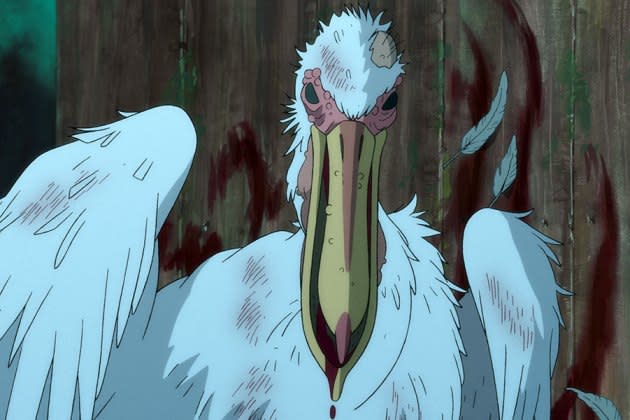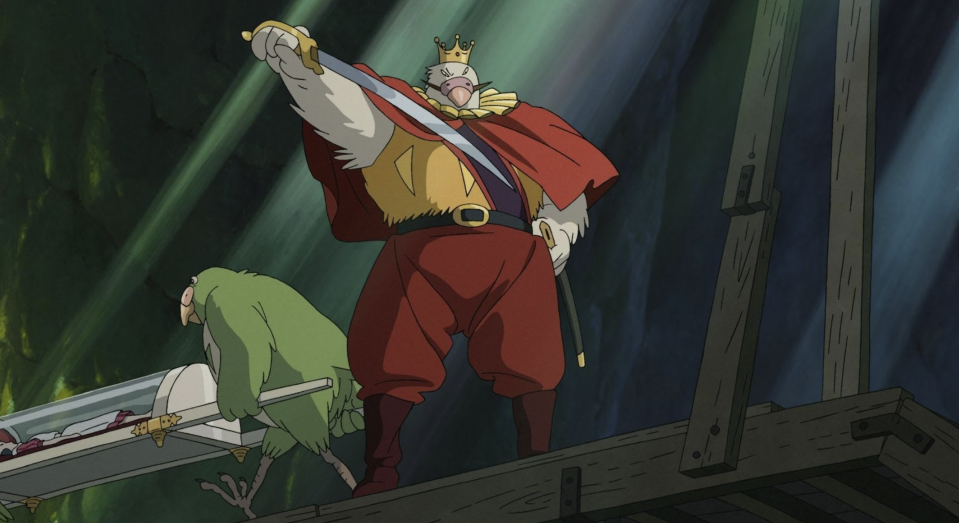‘The Boy And The Heron’ Cinematographer Atsushi Okui On Adding Dark Aspects To The Animation To “Bring Forth The Darkness” In The Main Character
- Oops!Something went wrong.Please try again later.
- Oops!Something went wrong.Please try again later.
- Oops!Something went wrong.Please try again later.

After the production team at Studio Ghibli disbanded, cinematographer Atsushi Okui worked as a freelance artist for a while. But when director Hayao Miyazaki began working on The Boy and the Heron, Okui was excited to be called back to the team.
In his most personal work to date, Miyazaki’s The Boy and the Heron follows the story of a young boy named Mahito, who has recently lost his mother. Along with a cunning and deceptive gray heron, he journeys to a mysterious world outside of time where the dead and the living coexist. To emulate the darker aspects of the story, Okui suggested that they should darken the colors of the animation as well.
More from Deadline
2023-24 Awards Season Calendar - Dates For Oscars, Emmys, Grammys, Tonys, Guilds & More
Kid Cudi Teams With Jeron Braxton On New Animated Feature 'Slime' Set In Dystopian Future

DEADLINE: When you began, what did Miyazaki have in mind for the cinematography of the movie?
ATSUSHI OKUI: There weren’t any specific directions that Miyazaki-san gave to me for this film in particular. But having gone through his storyboard, there were a few suggestions that I had to make from my side. You see very dark aspects in this film, and I took the liberty to make a few suggestions as to how we bring this darkness to the visual realm that this story has.
With Studio Ghibli pictures, all of the backgrounds are hand drawn with poster color paints, and then we turn that into data. When we turn the handwritten art into data, we have the base be the black background that was painted. However, we never attempted to make that any darker in digital or any darker in data except for this one. That was the first time we took upon the challenge of dropping the black even blacker, because unless we did that, we felt that we wouldn’t be able to bring forth the darkness that the main boy in the film harbors. So that was kind of a departure from the other films that we had done up until then.
DEADLINE: What were some of your highlights of working on this?
OKUI: If I were to pick one scene that I think we accomplished quite well, it is the scene where Mahito first goes into the netherworld, or that other fantastical world that you see in the latter half of the film. It’s a very strange world indeed, but we were especially meticulous about how we depicted the wind in that scene. Because if you remember, he first lands in this field and there’s this golden gate, and beyond the gate it’s supposed to be very still. There’s supposed to be no wind there, but while he’s in front of it, the wind is blowing around all over the place. We wanted to bring that contrast between having wind and then no wind at all and the animators were also very aware of this. So, we have the kind of key animated parts with the characters wearing their clothes and the clothes are all swaying in the wind, and also with the background artwork as well, we were very deliberate in adding movement to the grass and whatnot so that it did look very windy. That was one scene that we were very proud of and the way it was completed.
Best of Deadline
2023 Premiere Dates For New & Returning Series On Broadcast, Cable & Streaming
2023-24 Awards Season Calendar - Dates For Oscars, Emmys, Grammys, Tonys, Guilds & More
Colman Domingo To Receive Palm Springs Film Festival's Spotlight Award, Actor
Sign up for Deadline's Newsletter. For the latest news, follow us on Facebook, Twitter, and Instagram.

